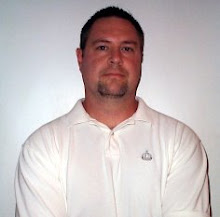100 Year Old Golfer Celebrates Birthday:
Golfing enthusiast Keith Schumacher celebrated his 100th birthday yesterday! An avid golfer, Schumacher played his first round in 1928 in Idaho. He plans on celebrating his birthday with a party after his round of golf.
Schumacher carried his bag for 18 holes, three times a week, until he was 90. Now he rides in a cart. He has been active all his life and regularly walks at least a mile a day.
If you think his longevity is due to his genetics, neither of his parents lived past the age of 56. He suffered the first of 3 heart attacks in '71, at which time his doctors told him he needed to give up smoking, and he did.
No doubt, his active lifestyle has contributed greatly to his long life. This should serve as an incentive for the rest of us to not just live longer, but to be active in your senior years in order to keep your mobility.
Here are a couple of articles that might help in fighting the aging process:
Chasing Life
Resistance Training Is The Fountain of Youth
Thursday, April 10, 2008
Subscribe to:
Post Comments (Atom)


1 comment:
Brian Morgan:
I have enjoyed reading your articles on how an active lifestyle contributes to a long and healthy life. I am senior teacher in training of the Alexander Technique, which coordinates the mind and body to integrate posture, intention, and the way we move through life.
As a posture and movement specialist, I have worked with several clients in their sixties, seventies, and eighties on balance, flexibility, and strength training. I am also an avid bicyclist, riding seventy miles a week and training regularly at the gym.
I agree with the statement in your article, “Resistance Training Can Reverse the Aging Process,” that, “you need adequate movement for prevention.” I would argue, however, that it is important to consider not only the movement that one does, but also the means by which one carries it out.
This last point cannot be emphasized enough. You state in your article, “Bodyweight exercises such as squats, stepups, and pushups can be done by most anyone.” In my experience, however, one may be able to do a squat, stepup, or pushup, but may not be able to do it in a way that is beneficial to their organism as a whole.
One of the discoveries made by Frederick Alexander, the originator of the Alexander Technique, is that the coordination of the head, neck, and back plays a crucial role in the overall coordination of both physical and mental activity.
In my experience, the vast majority of people who are asked to perform a stepup, for instance, do not simply engage leg extensors as the primary agents of the movement, but instead also engage neck muscles, back muscles, leg adductors, even arm muscles to carry out the activity. This is also seen when they ascend and descend stairs – they engage their neck, back, and arms in an activity that should primarily be the province of the legs.
The effect of this extra muscular tension is to pull the individual out of their natural state of poise. Over a lifetime, this tension contributes to the state we call “old age” – the very state that these exercises are supposed combat.
The answer to this conundrum? To cease the extra muscular effort by learning to use the body and mind in a more coordinated and integrated way. This is where the Alexander Technique comes in.
In my experience as a movement specialist and a physically fit individual, the Alexander Technique teaches us how to use our bodies and minds optimally, allowing us to get the greatest overall benefit from our exercise program. I would recommend that the Technique be added to any fitness program, especially for the elderly and other populations concerned with coordination, balance, and the integration of mind and body.
Caitlin Freeman
Amherst, MA
Post a Comment